 |
 |
 |
| |
Illicit Opioid Use After Changes in Opioids Prescribed for Chronic Pain Among People Living With and Without HIV
|
| |
| |
IAC 2020 virtual July 6-10
Reported by Jules Levin
PO Coffin1,2, C Rowe1, N Oman1, K Sinchek1, G-M Santos1,2, M Faul3, R Bagnulo1, D Mohamed1, E Vittinghoff2
Contact: phillip.coffin@sfdph.org
1San Francisco Department of Public Health, 2University of California, San Francisco, 3Centers for Disease Control & Prevention Supported by CDC grant U01CE002793 All authors deny conflicts of interest
IAC2020: Prescribed Opioid Dose Increase Tied to Future Heroin Use in HIV+ People - - (07/10/20)
Analysis of 598 San Francisco opioid users with or without HIV linked raising a prescription opioid dose to future heroin use in people with HIV [1]. Compared with HIV-negative people prescribed opioids, those with HIV were prescribed higher opioid doses despite reporting less pain and fewer sleep problems.
Compared with HIV-negative people, those with HIV were younger (median 50 versus 54 years, P < 0.001), more often white or Hispanic and less often black (P = 0.063), and more often male (71.4% versus 51.7%) or transgender (8.8% versus 2.4%) (P < 0.001). Average opioid dose was significantly higher in people with HIV in 2014, 2015, and 2016 (P = 0.007, 0.008, and 0.018), although people with HIV reported significantly less pain (average 7.1 versus 7.8 on 0-10 scale, P < 0.001). People with HIV also had significantly fewer sleep problems in the past 3 months (5.8 versus 6.5 on 0-10 scale, P = 0.017).
During follow-up, people with HIV reported using cocaine or methamphetamine significantly more often than people without HIV (51.1% versus 29.1%, P < 0.001) but were less likely to have a controlled substance agreement during follow-up (63.7% versus 83.4%, P < 0.001), have a controlled substance monitoring program check during follow-up (29.1% versus 77.4%, P < 0.001), or have a naloxone prescription during follow-up (31.3% versus 51.9%, P < 0.001).
In the whole study group, compared with people who had no prescribed opioid dose change, those whose prescribed dose increased had two-thirds higher odds of more frequent subsequent heroin use (adjusted odds ratio [aOR] 1.67, 95% confidence interval [CI] 1.32 to 2.12). An increasing dose more than tripled chances of subsequent heroin use in people with HIV (aOR 3.32, 95% CI 2.27 to 4.87) but did not affect chances of later heroin use in the HIV-negative group. Stopping an opioid prescription independently predicted heroin use in the whole study group and in HIV-negative people (aOR 2.05, 95% CI C1.60 to 2.84), but not in the HIV group.
Compared with people who had no change in prescribed opioid dose, decreasing the dose or stopping the prescription independently predicted more frequent subsequent nonprescribed opioid use in HIV-negative people (aOR 1.27 and 2.18) but not in people with HIV.
----------------
Illicit Opioid Use After Changes in Opioids Prescribed for Chronic Pain Among People Living With and Without HIV
"Participants discontinued from prescribed OPRs [opioid pain relievers] were more likely to use heroin and non-prescribed OPRs more frequently in subsequent quarters compared to participants with unchanged OPR prescriptions. Participants whose OPR dose increased were more likely to use heroin more frequently. We found a significant interaction with HIV status. The association between discontinuation of prescribed OPRs and higher frequency illicit opioid use remained only for those without HIV, whereas the finding of increased frequency heroin use after OPR dose increase remained only for PLWH. PLWH were more likely to be male, younger, on higher doses of OPRs, and to have less exposure to opioid stewardship measures, although these variables were controlled for in the model."
IAC 2020 virtual July 6-10
Reported by Jules Levin
PO Coffin1,2, C Rowe1, N Oman1, K Sinchek1, G-M Santos1,2, M Faul3, R Bagnulo1, D
Mohamed1, E Vittinghoff2
Contact: phillip.coffin@sfdph.org
1San Francisco Department of Public Health, 2University of California, San Francisco, 3Centers for Disease Control & Prevention Supported by CDC grant U01CE002793 All authors deny conflicts of interest
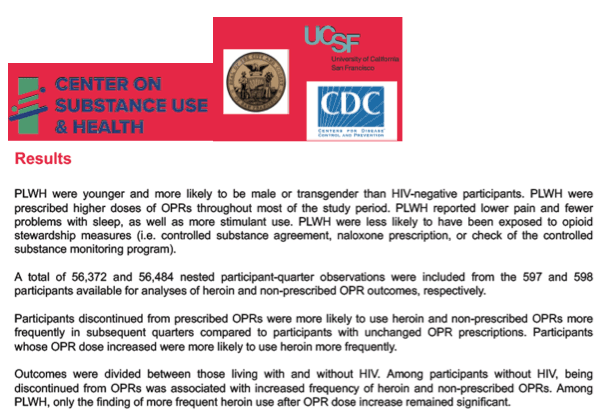
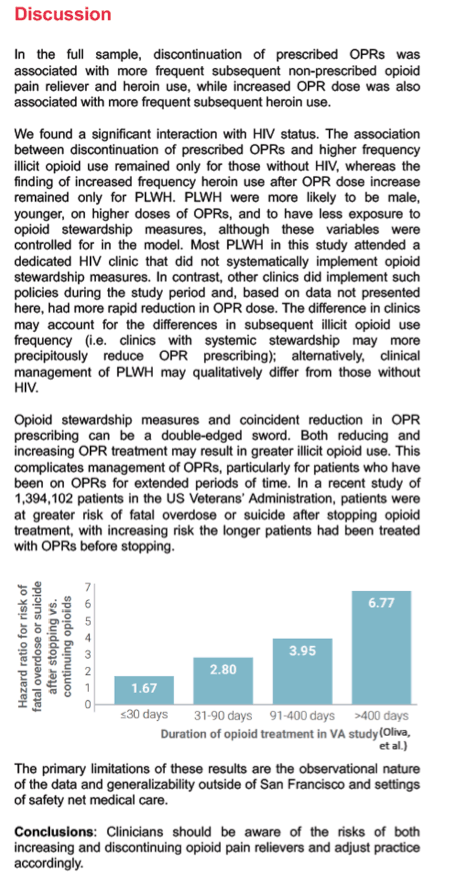
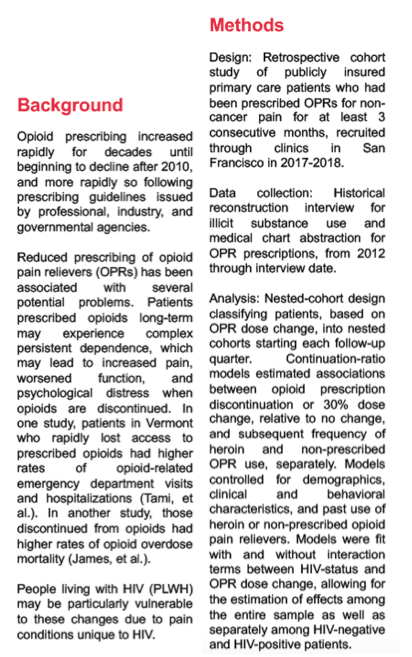
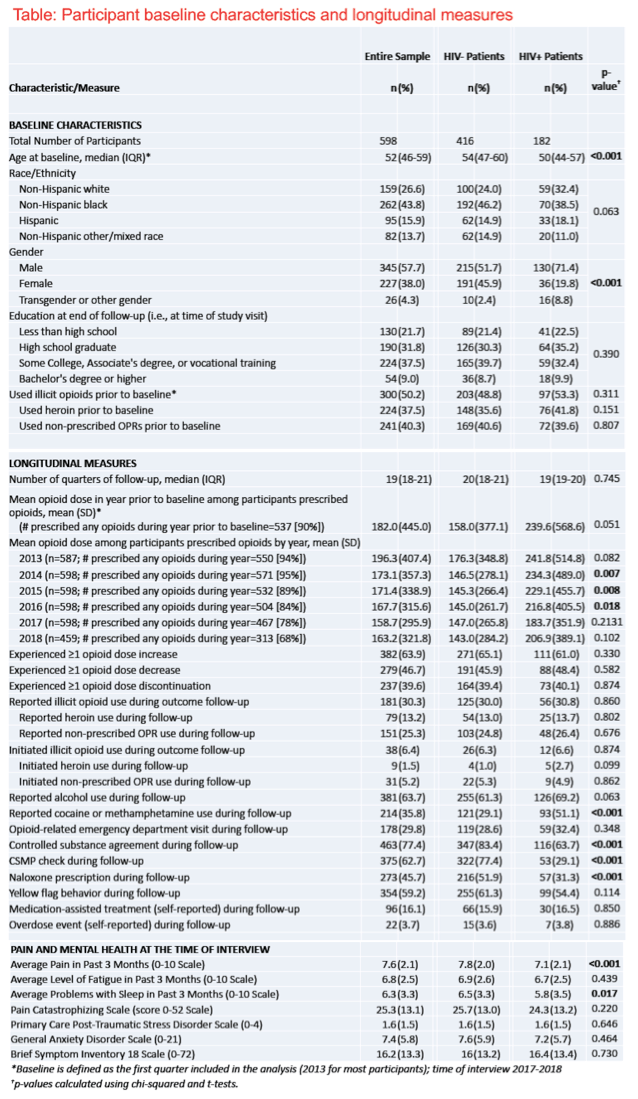
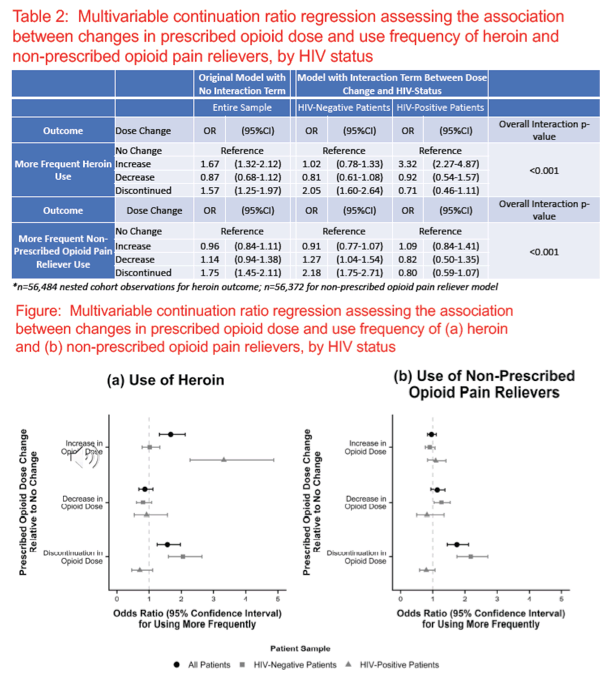
|
| |
|
 |
 |
|
|